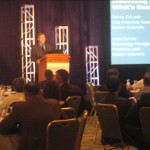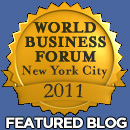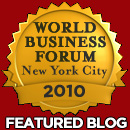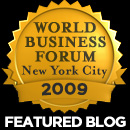Jan19
How to Accelerate Innovation
Point: Accelerate innovation by finding an analogous solution from a different industry.
Story:
Henry Ford’s assembly line is often touted as a breakthrough innovation. What’s less known is that Ford got the idea by seeing the “disassembly line” process of butchering hogs at the Philip Armour meatpacking company in Chicago. Similar techniques were also already being used by Campbell’s to automate canned food production.
Adopting ideas from other industries and applying them to your own industry is a powerful and proven source of innovation. But what if you don’t know which industry to examine, or where to look for that potentially breakthrough idea? Solutions may arrive serendipitously as you visit companies and read widely, but how do you accelerate the process and make it systematic?
One exciting solution I came across was described by Jim Todhunter, CTO of Invention Machine at the Open Innovation Summit last month. Invention Machine’s Goldfire software uses semantic technology to access a vast collection of scientific principles, patents, articles and Deep Web technical websites (meaning you can’t find them via standard search engines like Google). Simply put, Goldfire automates searching for analogous solutions in different industries. I talked with Todhunter to learn more about how Goldfire, an innovation platform, can help a company innovate systematically.
Todhunter described how a manufacturer of plumbing fixtures used adjacencies to remove lead from their plumbing fixtures. Companies have long known the dangers of lead and have substituted copper pipes for lead ones and stopped using lead-based solders for plumbing. But most of us don’t realize that fixtures like brass faucets also contain lead in the brass alloys. The reason faucets contain lead is because lead makes the brass machinable. A couple percent of lead mixed into the copper and zinc of the brass makes it easier to mill attractive surfaces, drill clean holes, and create smooth pipe threads on the brass. In short, the lead helps a faucet manufacturer create attractive, high-quality faucets. But over time, some of the lead in the brass leaches out into the water that flows through the faucet, which poses some health risks.
The faucet maker realized they needed help to solve the problem and turned to Invention Machine’s Goldfire software to find feasible external innovations. “Goldfire helped them in two ways,” Todhunter said, “in terms of what are called adjacencies and proof points.”
Adjacencies involve finding potentially analogous innovations found in other industries. For example, faucet makers aren’t the only companies worried about producing quality products from hard-to-machine materials. “On the adjacency side, when the company started to examine the problem with Goldfire, they were able to discover that there were technologies and methods used in other industries that could obviate the need for lead in brass,” Todhunter said. In particular, the manufacturer discovered that woodworkers have clever techniques for milling wood. These techniques could be adapted to machining lead-free brass.
The second help to accelerate the innovative solution is called proof points — tangible examples that prove a solution is commercially feasible. In terms of proof points (i.e., “are there ways to do this?”), the manufacturer was able to discover a very clear proof point through Goldfire: someone had already discovered a way to make millable lead-free brass. “The client didn’t even have to go invent this material — they were able to find a supplier,” Todhunter said. “As a result, the faucet maker accelerated their time to market for delivery on this kind of concept tremendously because this discovery created a partnering opportunity.”
Action:
- Clearly define the problem at hand (e.g., lead-free brass AND attractive, high-quality machined features)
- Survey adjacent industries or applications for ideas that overcome the problem (e.g., tricks for milling a hard-to-mill material)
- Survey external innovations and suppliers for proof points (e.g., a commercially available, lead-free brass alloy that is machinable)
- Combine externally-found adjacencies and proof points (i.e., use the best adjacent methods on the best proof point solutions)
For Additional Information:
Computer power yields radical ideas, by Stuart F. Brown, Fortune
Innovation to the Core: A Blueprint for Transforming the Way Your Company Innovates by Peter Skarzynski and Rowan Gibson











